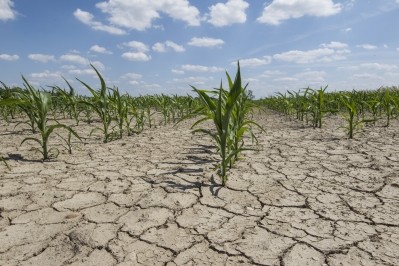US rains, flooding generate mold awareness, but not widespread feed crop damage

The crop progress report released late Monday by the US Department of Agriculture (USDA) indicated that feed crop conditions were staying consistent as 73% of the corn crop and 74% of the soybean crop were rated good or excellent – corn dropped a percent and soybean condition increased by the same amount from the preceding week.
There have been some questions raised about molds and mycotoxin concerns for areas including Iowa, which has had heavy rains and flooding in parts of the state, said Chad Hart, associate professor of economics, crop markets specialist and extension economist at Iowa State University. “Some areas, especially in northeast Iowa saw significant rainfall and flooding,” he added.
Producers who had floodwaters reach soybean pods or the ears of corn face more of a challenge, he said. Those crops are now considered adulterated.
“The production [in those areas] won’t be nearly as high, but surrounding those areas the floodwater didn’t get up to the crops,” he told FeedNavigator. “But, we’re stilling looking at a lot of water and the warmer, wetter conditions are allowing some toxins to develop in areas.”
However, the size of the national feed crops means a drop in production will be less noticeable, said Hart.
The quality issues are likely to be in specific pockets of the state and to not harm overall crop conditions, he said. Producers will need to watch for mold development, but that should be done every year.
“What I’m worried about is crops that have dried down and the rain re-soaked them again, so moisture is up and down,” he said. “We have the advantages as both the corn and soybean crops have been running ahead of schedule.”
Areas that are seeing crops go through an earlier dry-down process and being harvested sooner, like portions of the Southern and Eastern Corn Belt, could see a better result for potential molds and toxins, he said.
“We’d like to dry out some and continue to be dry because we’re getting to the stage where the bulk of the harvest is coming on,” said Hart. However, if there are fields that are particularly concerning for mold or toxin development, it may be a good idea to harvest the grains and then dry them mechanically, he added.
Looking forward producers are hoping to see a stretch of dry, and preferably cooler conditions, he added.
Corn and soy
Overall about 86% of the corn crop had reached maturity by the week ending October 2, said the USDA. Last year about 82% of the crop hard reached maturity by this time and the multi-year average is 79%.
States lagging behind where they were last year include Colorado, Kansas, Ohio, Pennsylvania, the department reported.
About 24% of the crop also has been harvested, which is in line with production last year, the department said. However, it is slightly behind the 27% completed on average by this point in the year.
States where the harvest has outpaced last year’s production pace include Kentucky, Minnesota, Nebraska, North Carolina, North Dakota, South Dakota, Tennessee and Texas, the department said.
The soybean crop remains ahead of both where it was last year and the multiyear average, for plants reaching the dropping leave stage, said the USDA. About 83% of the crop has met that development point.
Slightly more than a quarter, 26%, of the crop also has been harvested, the department said. Last year about 36% had been collected at this point in the year.
States with the largest slowdown in progress compared with where they had reached at this point last year include Illinois, Indiana, Michigan, Minnesota, North Dakota and Ohio, the department said. However, Tennessee, North Carolina, Nebraska and Mississippi remain ahead of last year’s harvest schedule.
Wheat and other feed grains
About 41% of the sorghum crop has been harvested, said the USDA. The pace is in keeping with last year and ahead of the multi-year average.
However, 19% of sugarbeets have been harvested, down from the 36% collected at this point last year, said the department.
The winter wheat crop is seeing a similar planting schedule to past years, with 43% of the crop in the ground, compared to 44% at this point last year, and an average of 45%, said the department. However, the crop is sprouting faster than in past years with 20% emerged at this point instead of 16%.











